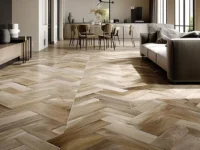
Looking for a simple, inexpensive and fun craft to kick off the new year? Try wallpapering your furniture!
Besides creating chic and unique pieces to decorate your home, there are a thousand and one reasons to try this decorating technique. But since we don't have the time or the number of words to elaborate on the wonders of wallpaper, we've narrowed it down to three. chantemur wallpaper
#1 - It's sustainable!
If you're like us, you love to touch up, add new touches and transform the look of your home, but it's important to be wary of overdoing it. In these tough times, sustainability is the name of the game, and that's especially important when it comes to home decor.
Using wallpaper to decorate furniture is a way to recycle old and used pieces into updated and personalized pieces. Whether it's pieces you find at a thrift store or old furniture lying around the house, think of it as a blank canvas that you can customize with the wallpaper of your choice.
#2 - Stand out
At this point, "fast" furniture has become a fixture in homes around the world, most notably from IKEA, but also from cult brands like CB2. The advantage of stores like these is that they create beautiful and affordable furniture, but the unfortunate downside is that everyone ends up with the same things.
Decorating with wallpaper is an easy way to set your furniture apart from the rest. Their often simple patterns are a great starting point for getting the look you want in your home.
#3 - It's cheap
Giving new life to old furniture avoids the wastefulness of buying potentially expensive new pieces, and unless you plan to buy furniture at a thrift store or IKEA, it only costs the price of wallpaper. So, if you are interested in renovating your home on a budget, upholstering your furniture is the perfect design project for you.
So, do a quick mental scan and take stock of all the furniture you currently have lying around your house - that Billy bookcase in the office, the outdated china cabinet your parents gave you, a boring dresser that could use a facelift... these are all surfaces just waiting to be wallpapered! Plus, it's incredibly easy to do.
How to decorate furniture with wallpaper
Before you start upholstering your furniture, you'll need a few tools:
- A pencil
- A tool to measure
- A cutter, razor blade or scissors
- Wallpaper paste (if you are not using adhesive wallpaper)
- A wallpaper hanging brush or soft cloth
Step 1: Prepare the surface
When it comes to the types of surfaces you can cover with wallpaper, the possibilities are endless. However, it's important to note that not all surfaces accept wallpaper in the same way. You will either need to choose a wallpaper that you know will adhere well to the surface, or you will need to customize the surface to your wallpaper of choice
If you are using a non-adhesive wallpaper, for example, you will need wallpaper paste, which does not adhere to glass. So if you intend to cover a glass surface, you should use double-sided tape or choose adhesive wallpaper. First, it eliminates the cost of wallpaper paste. Second, it naturally adheres to a wide variety of surfaces, including satin drywall, ceramic tile, linoleum, plastic, and particleboard or melamine, which is often found in IKEA furniture.
Step 2: Measure and cut
Save yourself a sticky, time-consuming mess by measuring the area you plan to upholster. Keep in mind how you want your furniture to look when it's finished. Do you want clean lines? Invisible edges?
For example, if you are lining the front of a drawer, measure enough paper to wrap around the edges. Your measurements don't need to be exact because the edges of the paper won't be visible. However, if you are covering a surface with edges, such as the panel of a bookcase, you will need to be very precise.
Step 3: Apply and smooth out air bubbles
Once you've cut out your wallpaper pieces, all that's really left to do is apply your wallpaper!
If you are using non-adhesive wallpaper, first apply wallpaper paste directly to the surface or wallpaper as shown, then work slowly to apply the wallpaper to your furniture, being careful to avoid air bubbles as much as possible.
Once the wallpaper is applied, use a soft cloth or wallpaper brush to remove air bubbles until it is perfectly smooth. You can also use a straight edge such as a spatula or credit card to push out the bubbles.
Step 4: Prune to perfection
At this point, you may be done upholstering your furniture, but if some of the edges are hanging or looking uneven, this is a good time to trim the excess with a razor blade or utility blade. Once the edges look uncluttered, your project is complete!
.



